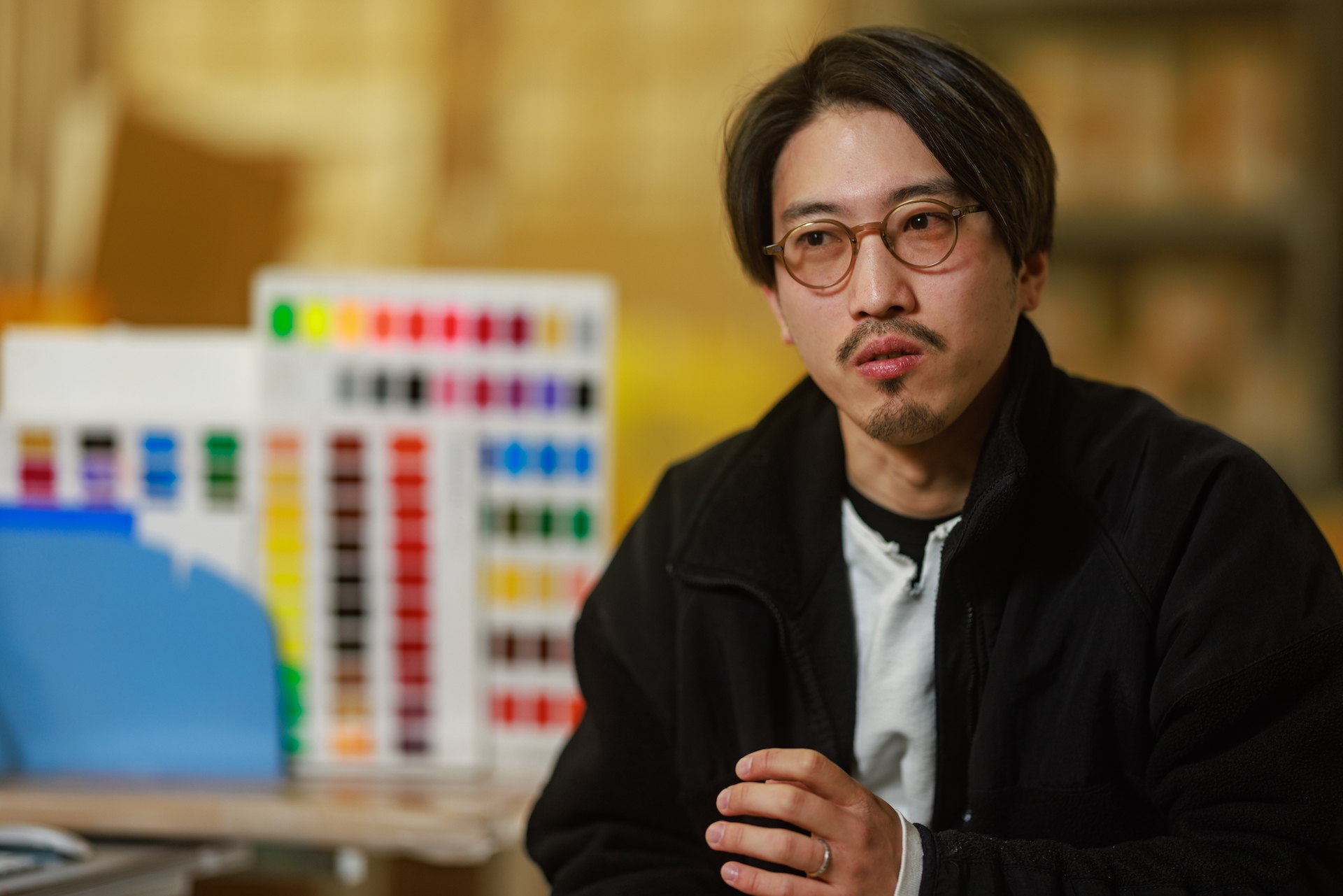
It's not a smooth journey at all
When did you join Kaikai Kiki?
I joined as a part-time worker during my second year of university. I believe it was around 2011.
What made you join Kaikai Kiki?
I was attending Musashino Art University, and someone two years ahead of me was working at Kaikai Kiki. He invited me to join as a part-timer. While talking with him at the university’s smoking lounge, he told me that Kaikai Kiki had a lot of work and I could make good money, so I should give it a try. At that time, I only knew of Takashi Murakami from textbooks, and though I said, “Sure, I will,” it didn’t feel very real to me.
When I had the interview, I learned that Kaikai Kiki was working at a rapid pace producing works for the upcoming The 500 Arhats exhibition at the Mori Art Museum. They told me they were short on staff and offered plenty of work hours, and I decided to join because I wanted to make money at that time.
How did you feel after joining the company?
Actually, at first I didn’t pass the interview… but the upperclassman who had invited me set up another interview for me, and I somehow managed to get hired. The first thing I noticed after joining was the sheer scale of the production. The paintings were huge, the projects were large-scale, everyone was extremely busy, and I could hear people shouting everywhere—it was overwhelming.
But I accepted the situation because I thought, “This is a pyramid.”
What do you mean by that?
I love ancient civilizations, especially pyramids. Pyramids are full of mysteries, and there are still various theories about why they were built. Despite being thousands of years old, they still exist today and are known as historical structures by everyone worldwide. Moreover, they were built by many people working together towards one great goal, without machines, risking their lives to complete them. Imagining the moment when they placed the last stone, how everyone must have screamed, excites me. At Kaikai Kiki, it feels like we are building a pyramid; everyone works together towards a big goal. Unlike ancient Egypt, we have a vastly improved environment—we have AI, machinery, modern civilization, proper salaries, and a roof over our heads. Being able to participate in creating something that will go down in art history is the perfect environment for someone like me, who loves pyramids.
What kind of work are you in charge of?
I mainly oversee the entire production of Takashi Murakami’s paintings. I am in the Painting Department, and I manage the staff and supervise the painting production. It’s like being the master carpenter—Mr. Murakami develops the initial idea, the Data Department creates the painting’s blueprint, and then it gets handed over to the Painting Department. From there, we handle all aspects of painting production, including procuring materials like paint, determining the methods of execution, scheduling, presenting to Mr. Murakami, refining, and making corrections.
Going back to the pyramid analogy, I imagine it took incredible skills to carve stones and design symmetrically 4,000 years ago, and I take pride in the way our Painting Department also uses modern techniques creatively to produce painting. Being involved in creating history in this way is very rewarding.
Please tell us about your daily routine.
The Painting Department operates 24 hours a day in four shifts, and I work the night shift. Depending on the situation, I start work at either 8:30 pm or midnight.
First, I make a to-do list for the day. Then, I check in with the team on-site to discuss progress and tasks. After that, I arrange for Mr. Murakami to review the works in progress. I update the progress status on the whiteboard to reflect the latest situation. Then, the rest of my shift is just dedicated to production.
I sort and hand over tasks to the day shift employees by 8:30 am or 8:40 am before heading home.
What is the most difficult thing about working at Kaikai Kiki?
The sheer scale of the goals we aim for, the size of the projects, and managing the constantly urgent schedules are really challenging. Painting production requires coordinating a wide variety of stakeholders, including contractors, employees, Mr. Murakami, and part-time staff. Ensuring smooth communication and proper information flow to avoid anyone saying, “I didn’t know that,” is very challenging.
What is the most rewarding aspect of working at Kaikai Kiki?
It’s definitely the opportunity to be part of work that will go down in history. The journey is never smooth, but I enjoy working with everyone towards achieving high goals.
Please give a message to those who are considering working at Kaikai Kiki.
This is quite difficult… but first and foremost, we are looking for people who love art! Objectively speaking, I believe our salary standards are competitive within the industry. Being involved in large-scale painting productions and receiving world-class feedback on techniques and colors is rare even globally. The ultimate mission of the Painting Department is to create works that are highly valued worldwide. We want people who can think about the quality of paintings in terms of their global market value and view them as products.
